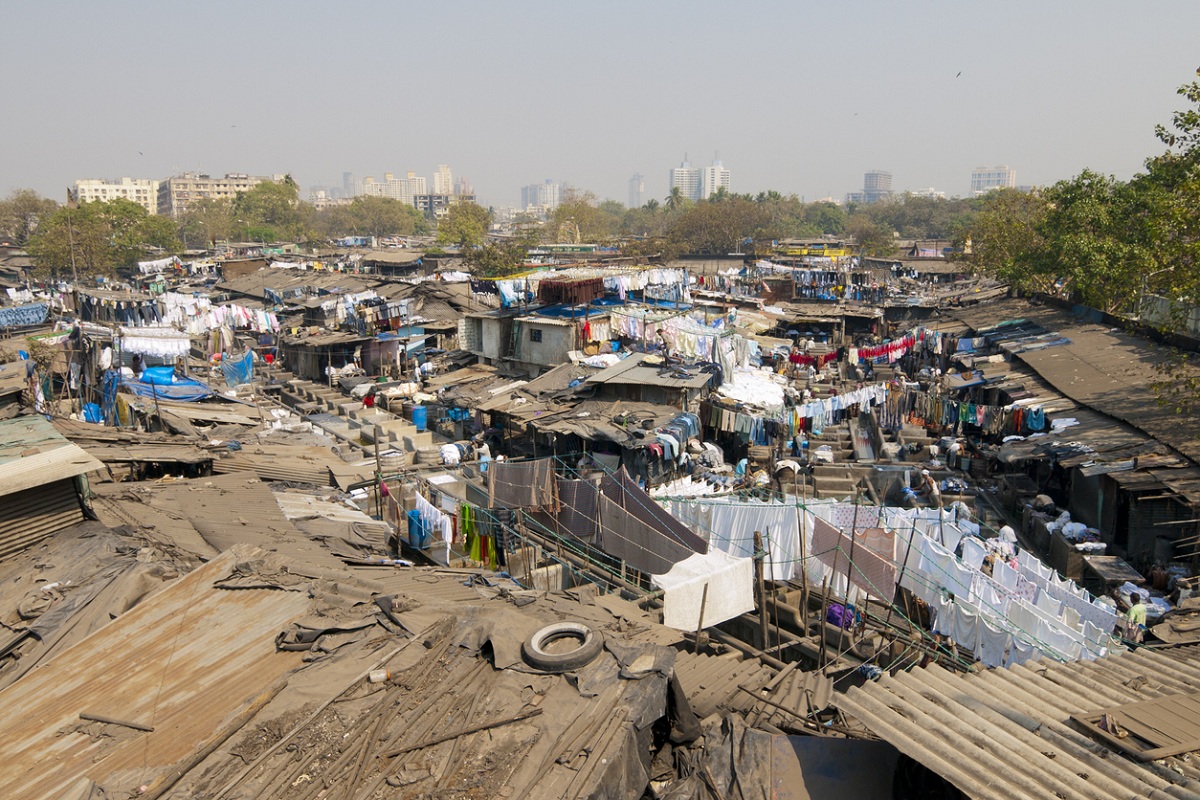Covid pandemic has exposed the underbelly of urban India with a disproportionately high impact on slum dwellers both in terms of infection and death. The slums dwellers are invisible otherwise, living in deplorable health and environmental conditions have once become visible. Recurrence of pandemics can become worse in future unless correctives are taken now.
Nearly 35 per cent of the urban population live in slums. More than 50 per cent of Covid cases have been traced to slums in 12 major cities where physical distance is a far cry and containment is a huge challenge. The Government of India’s provision of Rs 70,000 crore for rental housing in PPP looks like a single pony trick which achieves very little with underlying factors not being addressed.
Slums have come up not because of poverty and encroachments alone, but because of lack of affordable housing on the one hand and failed policies on the other. The Town Planning Act of 1947 does not factor in the urban poor, workmen and migrant labour. Even when state policies promoted slum development, it did too little and the resultant contrived scarcity created its own vicious cycle.
When the private sector was encouraged, unworkable density emerged shoring up the sprawl. Against an average per square kilometre population of density of 2 lakh in Mumbai slums, it became 6.5 lakh and per hectare a population of 6500 was pushed in. This mindless “densification” resulted in high rises without open space and amenities.
There is evidence to show that lung diseases are spreading in the absence of air and light. Typically in India smart densification in CBD and substantially lower FSI in suburbs is not followed and has not encouraged redevelopment of the best accessible land and has encouraged denser suburbs. Use of TDR ( Transferable Development Rights) to disperse development in the city instead of concentrating on selected areas chosen in advance has resulted in political rent, a profit-driven approach of the builders which militates against social housing.
The TDR and FSI tweaking requires far deeper fundamental changes to come to fruition. Similarly, regional development and new cities along the transport nodes is a possibility but will require a longer time-frame and is expected to be bogged down in our fractious politics in the manner of Amaravati. The market has failed to solve the housing crisis in Mumbai and is likely to fail in most other cities with high premium land value.
But the failed policies don’t get dumped in public policy. Houses are the places where the jobs go to sleep in the night. Hence quality, quantity, affordability and inclusiveness are important. Affordability is a function of the cost of the house and transportation cost that ensues. While rent or EMI to annual income is one part, locational affordability (transportation cost) and liveability are other important aspects.
Government policy subsidizing houses in far-off places with long distance travel is another misguided policy under JNUURM. If the transit takes an additional two hours every day, either the worker is sleeping two hours less or compromising lost time somewhere. If markets cannot solve this problem, the Government will have to step in either directly or through better control, supervision and stewardship.
It is time to rethink urban affordable housing for poor through a different prism. It is possible to rethink housing in terms of housing cost borne by the beneficiary with bank loan and interest rate subsidy. If land is not charged, because it is the costliest component, and the Government bears the cost of basic amenities this model is workable.
It was attempted successfully for 100000 houses in Hyderabad and Vishakhapatnam until it was edged by a high subsidy scheme injudiciously introduced. In the net, the buyer gets a discounted price but the egregious effect of subsidy is obviated. In slum development, 50 per cent of the area can be kept as open area for the community; the remaining area of 150 per cent of the floor space can be built upon with the Government keeping 50 per cent for the rental area and of which some part can be sold/ shared, with the builder towards compensating for the mobilisation and supervision cost.
For all the new development of the private sector, the Governments will have to remember that high land price and unavailability of land is the reason why the slums have expanded. The builder will have to agree to earmark 10 per cent of thearea for inclusive and affordable housing of a scale stipulated by the government. The area can either be given to the government to develop rental housing for the poor or the builder can build it with the Government’s stipulation.
An SPV can take care of the government remitting the monthly rent amount for the next 10 years if possible. Rental price is defined as an upfront which needs to be indexed to inflation. The developer can be compensated by zoning incentives and relaxation of planning norms. When the demand is inelastic, a larger burden will fall on the buyer. Hence there is a rationale for state intervention.
With 10 per cent land earmarked for production for the poor, there will be some pressure on the larger houses built for the higher income group, though there is no conclusive evidence. It may impose the cost, but that can be offset. This crisis is a time when barriers to reform the habitat policy are lowered for reconfiguring the social contract with the disenfranchised. But that is when politics shows sagacity and statesmanship.
(The writer is a former Secretary to the Govt. of India)












